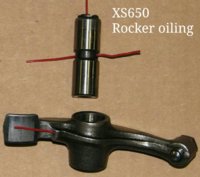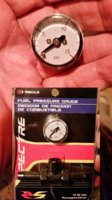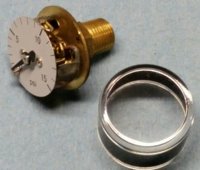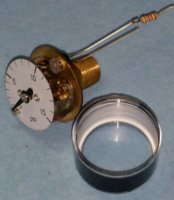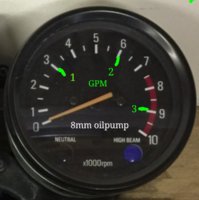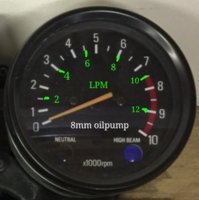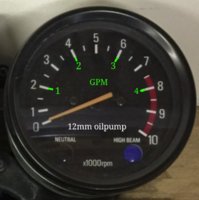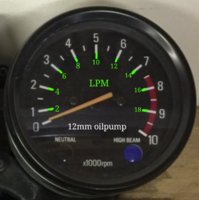DogBunny................."high oil pressure equals low volume" and vice versa! Well spoken!
I use a very simple way to check if the top end has oil flow. When I start a cold engine, I put my ear down next to the top end. For the first 8 or 10 seconds, I can hear metal on metal clatter. Then as soon as the oil flow reaches the tappets and rocker arms, the clatter stops. Its a very positive check.
I think its extremely difficult to damage these engines from a loss of correct oil flow.
Only ways I can think to do that:
Engine burns and leaks a lot of oil, and owner never adds oil so the oil level gets very low.
Gasoline from the tank leaks into the oil sump and dilutes the oil.
Sump strainer never inspected and oil never changed, so strainer becomes plugged up with sludge etc.
(The right side filter can plug up, but is not fatal to the engine because the relief valve will lift and pass enough oil)
Disconnect and remove the tachometer drive shaft and gear that drives the oil pump. One lad did that and still drove for 200 miles before the engine blew up!!
I use a very simple way to check if the top end has oil flow. When I start a cold engine, I put my ear down next to the top end. For the first 8 or 10 seconds, I can hear metal on metal clatter. Then as soon as the oil flow reaches the tappets and rocker arms, the clatter stops. Its a very positive check.
I think its extremely difficult to damage these engines from a loss of correct oil flow.
Only ways I can think to do that:
Engine burns and leaks a lot of oil, and owner never adds oil so the oil level gets very low.
Gasoline from the tank leaks into the oil sump and dilutes the oil.
Sump strainer never inspected and oil never changed, so strainer becomes plugged up with sludge etc.
(The right side filter can plug up, but is not fatal to the engine because the relief valve will lift and pass enough oil)
Disconnect and remove the tachometer drive shaft and gear that drives the oil pump. One lad did that and still drove for 200 miles before the engine blew up!!

